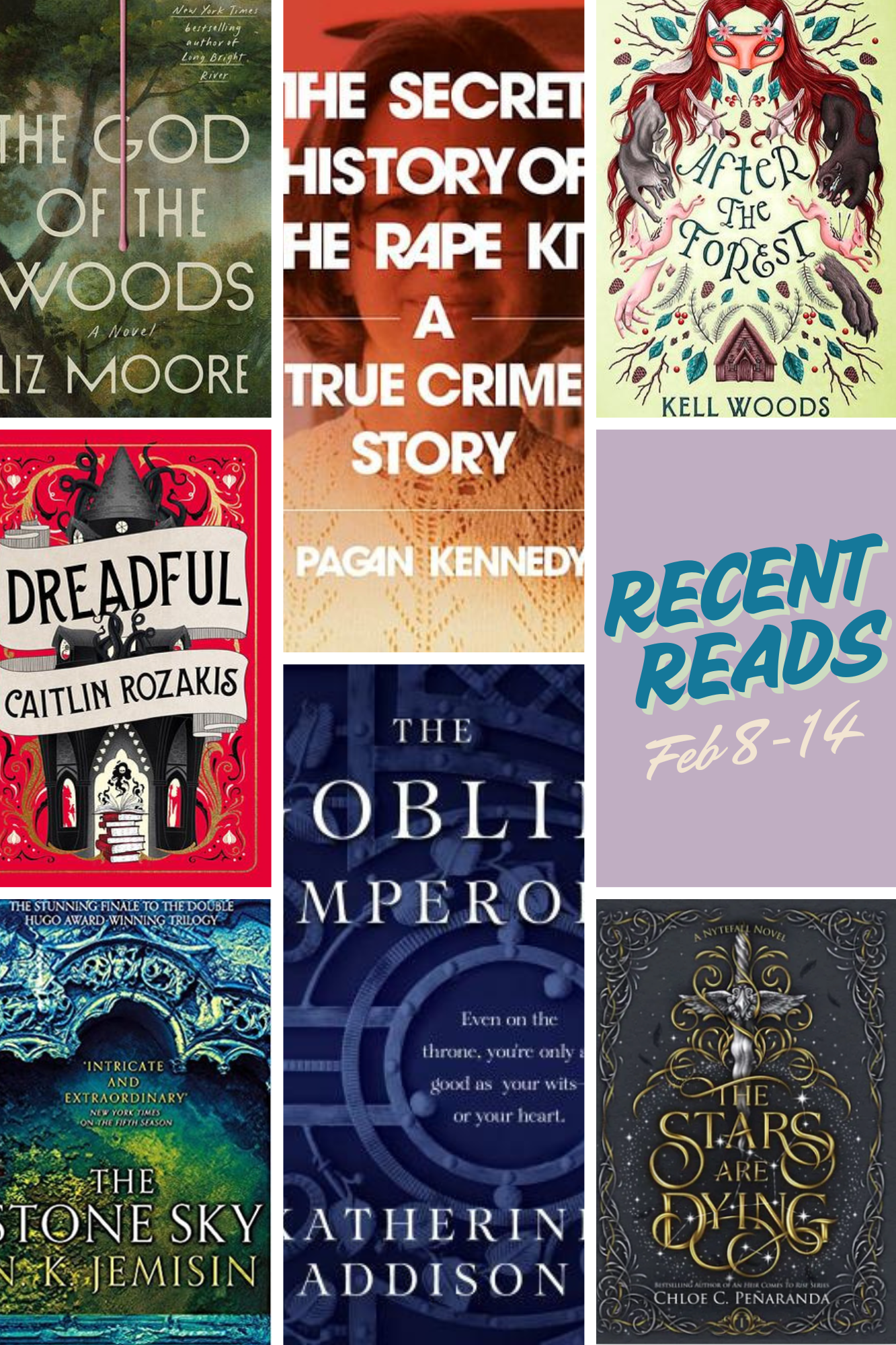
I had fun with this slightly absurdist fantasy. The main character wakes up after a magical accident apparently gone wrong, missing his eyebrows and also his memories. Although he finds his eyebrows quickly (set aside prior to the experiment) the memories do not return. This makes the situation a bit difficult when he realizes that he happens to be a dark wizard living in a castle with goblin staff, a captive princess in his dungeon, and three
more dark wizards on their way to visit to complete some sort of devastating, potentially world-ending summoning. Gav, the main character, tries to put on a front while searching for his memories while gradually realizing that he doesn’t exactly want to be an evil Dark Wizard. The narrative plays into nearly every trope of old school fantasy with slapstick humor making it not the narrative for everyone. It worked for me, providing an enjoyable read. It doesn’t go deep but it doesn’t need to.
I knew going into this read that this book does not really fall into typical thriller or murder mystery tropes. For someone who has little experience in this genre, I was not put off by this as someone more familiar with the genre might be. I really enjoyed the structure of this narrative which told a complex family story through the lens of a disappearance that dragged up an even older disappearance since the missing girl at this

summer camp was not only the daughter of the generationally wealthy owners of the camp but also the sister of the eight year old boy who disappeared before she was born. The narrative flows through multiple perspectives – Louise, the head counselor, Tracey, the friend and bunkmate, Alice, the mother, and others including the man accused wrongly of the brother’s murder 14 years earlier – and multiple timelines from before the parents’ marriage to after the daughter’s disappearance. Again, I typically do not enjoy narratives that bounce between so many yet Moore smooths out these bounces in a way to satisfyingly tell the story and develop the characters in a way that gives them depth but also shows hints at even more to their stories. I really enjoy books like this that subvert my expectations.

Some people have such immensely creative brains. I cannot fathom how authors like Jemisin can create such immensely complex world and nuanced characters. In this conclusion to the trilogy, she brings in the final expansive piece to the lore of this world with a new perspective and timeline which, yes, made things infinitely more complex but also brought back some of the same fascinating dynamics of book one that the
middle book lacked. I really enjoy books like this that make my brain work, especially if they add in clearly targeted allusions to real life around us which Jemison does so well.
Often times short nonfiction books like this do not tell a complete enough story to leave the reader satisfied, to be more than a sampler on the topic. Kennedy manages to do so beautifully in this work which was originally published as a long form piece in a publication whose name escapes me as I write the review. She could have told just the generic story of this evidence gathering tool but I do not think that any reader would have

gotten anything out of that. Instead, Kennedy gives this story heart and depth by also telling the story of the woman who created this tool, a woman that history almost forgot. I found this book to be highly impactful and to also have a lot of unfortunate resonance with the world we live in and the events unfolding around us.

I looked forward to this book after reading/watching reviews from others whose fantasy tastes align with mine and was not disappointed. Addison crafts a well-contained standalone high fantasy novel that explores the nuance of leadership thrust unexpectedly upon someone, a person who never expected to have to deal with any of what’s now on his place because of how his family treated him based on his race and nothing more. The
main character also encounters pushback because of the conflict of being a good, moral person and the status quo of how things had always been done. I really enjoyed this read.
I approached this read a bit hesitantly after a string of book box book reads this month and last that have disappointed. Sometimes these lower expectations work in my favor as they did with this book. Instead of disappointment, I found fascination and a unique take on children’s fairy tales. The main character, Greta, lives with her brother, Hans, and the childhood trauma of being abandoned by their father in the middle of

the forest as well as their subsequent captivity and torture by a witch. Yes, the main character and her brother are the grown up Hansel and Gretel. Woods weaves together this Grimm fairy tale with several others, including most prominently that of Snow White and Rose Red. These tales come to live in such a believable way that it would be easy to look at Greta’s story, and the story of those around her, as the real inspiration for the Brothers Grimm. Although this is not a perfect book – I am most critical of the near insta love between Greta and her love interest – I really enjoyed this read.
